Did you know that travelers who book early fill top hotels and guided tours up to six months ahead in peak months? I learned this the hard way, and it changed how I plan every trip.
I find this country rewards trips in every season. From vine-covered Douro slopes to the Algarve coastline, each region offers a different rhythm.
My guide helps me match weather, crowds, and prices so I can pick dates that suit festivals, harvests, or quieter city walks. I balance long daylight against budget and serenity.
I also map a simple framework for first-timers choosing between Lisbon, Porto, the Douro Valley, and the southern beaches. Booking ahead matters when I want specific stays and local guides.
Key Takeaways
- I plan by region—north is cooler, south is warmer.
- Early booking avoids sold-out hotels and guides.
- Shoulder seasons often mix good weather with lower prices.
- I set priorities: festivals, beaches, or wine country.
- Use this guide as a roadmap for a smoother trip.
How I decide the best time to visit Portugal
I start by asking one clear question: what do I want from this trip? Do I want warm beaches, lively festivals, wine harvest energy, or quiet city walks? That answer frames every choice.
My quick rule: match the month to the goal. I use three levers—weather, prices, and crowds—to trade comfort for value when needed.
- I pick March or nearby early spring for mild days and thinner crowds; February and early April are similar.
- I choose winter (Nov 1–Mar 31) when I want the lowest hotel rates, knowing northern temperatures drop and coastal rain rises.
- For sun and sea I accept summer peaks (May–Sept), with July–Aug busiest on beaches and higher demand.
- The Douro harvest in Sept–Oct adds festival energy and bookings for wine lovers.
Quick planning tip: name your priority—beaches, cities, or wine—and pick months that align. That simple match keeps the trip focused and stress low.
Best time to visit Portugal for weather, beaches, and sunshine
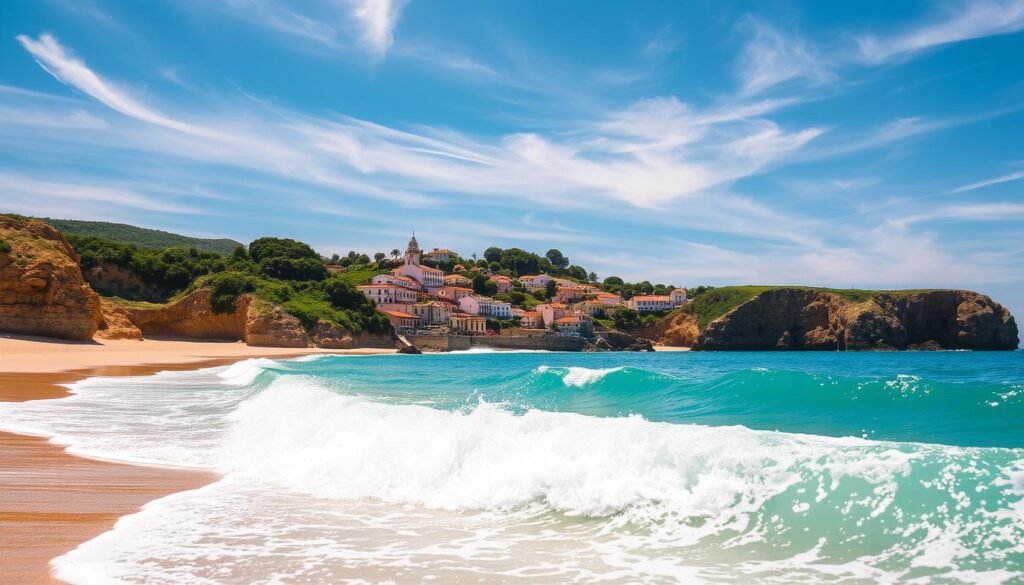
I pick months by how much sun and mild weather I want each day. That choice guides whether I chase long beach afternoons, coastal calm, or cooler city strolls.
Summer (late June–August)
Summer brings long, bright days and average highs in the low 80s°F, with August the hottest. I rely on early mornings for hikes and late afternoons for city walks while saving midday for the water.
The Algarve region is breezier and a bit drier than Lisbon, so it’s my go-to when I want warm, dependable afternoons on sandy coves.
Early autumn (September–October)
September rules for lingering warmth and quieter parking at the beach. Sea temperatures stay comfortable, so I often trade midsummer crowds for softer light and more relaxed coast days.
Spring (March–early June)
Spring brings mild temperatures and green hills. I love wandering cities and country lanes when flowers are blooming and crowds are thinner.
Winter (December–February)
Winter is milder across much of the country, ideal for museum days and cozy cafés in Lisbon and Porto. I stay flexible for occasional coastal rain and plan indoor options.
- Tip: I pack sunscreen, a hat, and a shade plan for sizzling August days.
- Tip: For relaxed seaside time, I often choose September for its lingering warmth.
Quick note: Use this short guide when you set your calendar and decide the best dates for what you want most from your trip — sun, sea, or calm city hours — and it will help fine-tune the time visit portugal that fits you.
Prices and crowds by season: how I time my trip for value
My schedule hinges on when crowds swell and hotel rates climb. I first pick a season, then match months to what I want from weather, cost, and space.
High season runs late June through August. Beaches are busiest in July and August, and coastal towns often sell out. For peak summer stays I reserve hotels and local guides well in advance.
High season
Late June–August: expect crowded beaches and higher nightly rates. If I must travel then, I book early and choose quieter countryside lodgings for evenings.
Shoulder seasons
April–early June and September–November balance solid weather and better rates. I find lively restaurants and shorter lines, plus easier booking for guided tours.
Low season
December–April offers the lowest hotel prices. It’s chillier in the north and rainier on the coast, but I use this for city breaks and quieter museums.
| Season | Months | Crowds | Cost & tip |
|---|---|---|---|
| High | Late June–August | Very high (beaches peak) | Book 3–6 months ahead; expect premium rates |
| Shoulder | Apr–early Jun; Sep–Nov | Moderate | Great balance of weather and savings |
| Low | Dec–Apr | Low | Lowest rates; accept cooler, wetter days |
How I act on this: I anchor my budget plan to the season and adjust nights and routes. For wine trips I watch september october closely—harvest brings demand, so I either go then for the buzz or pick spring for quieter tastings.
I also track school holidays and event calendars. That simple check helps me avoid surprise spikes and get more value from every day I travel. For a quick read on calendar tips I sometimes consult seasonal guides.
The best time to visit Portugal by region
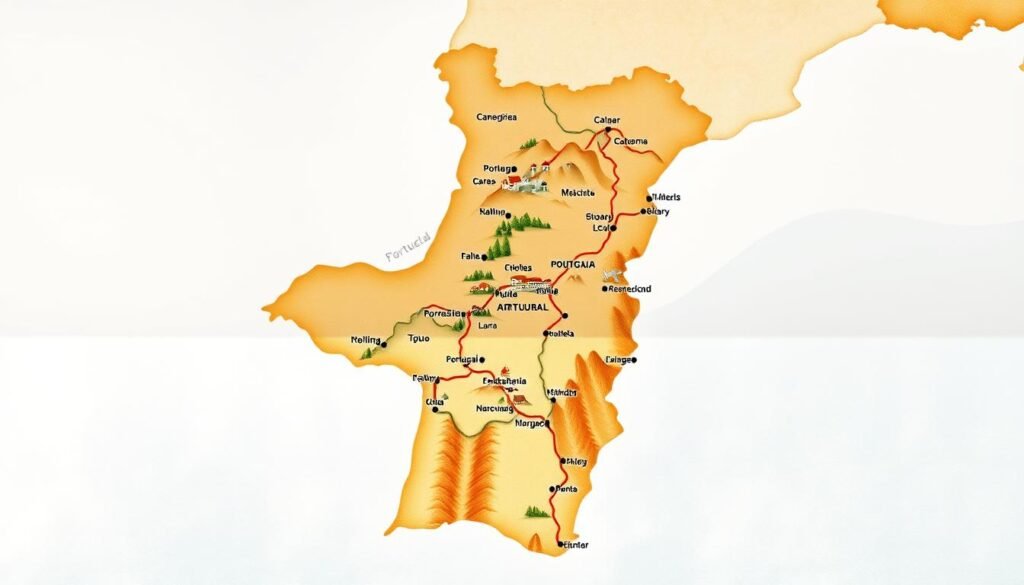
I pick dates that highlight what each region does best — city culture, coast calm, or vineyard buzz. Below I break down where I go and when I feel each place is at its most rewarding.
Lisbon and Porto
I favor winter and spring for museum days, markets, and cozy wine bars. The cities feel quieter then, which makes gallery hopping and tile spotting easier.
Summer is lively and photogenic, so I rise early and save late evenings for riverfront strolls.
Algarve region
For long beach afternoons I aim for July–October. The south keeps warm seas and steady breezes along the coast.
Douro Valley
I chase harvest energy in September–October when the vineyards buzz with activity. For calm tastings and green terraces, I visit in spring.
Alentejo countryside
The Alentejo is my refuge for slow stays among olive groves, cork oaks, and quiet villages. Spring wildflowers and fall light are especially lovely in this countryside.
| Region | Peak months | Why I go | Packing note |
|---|---|---|---|
| Lisbon & Porto | Dec–May | Culture, markets, wine bars | Layered clothes for varied temperatures |
| Algarve | Jul–Oct | Warm seas, coastal walks | Light layers, sun protection |
| Douro Valley | Sep–Oct; Apr–May | Harvest buzz or quiet tastings among vineyards | Layers for cool mornings |
| Alentejo | Mar–May; Sep–Nov | Peaceful rural stays, farm-to-table | Comfortable shoes for hill villages |
Quick note: I split time between regions so I can feel contrasts — Atlantic cities, golden beaches, terraced valleys, and rural farm life. That mix helps me plan what places I want to visit and when.
Month-by-month guidance I use to plan smarter
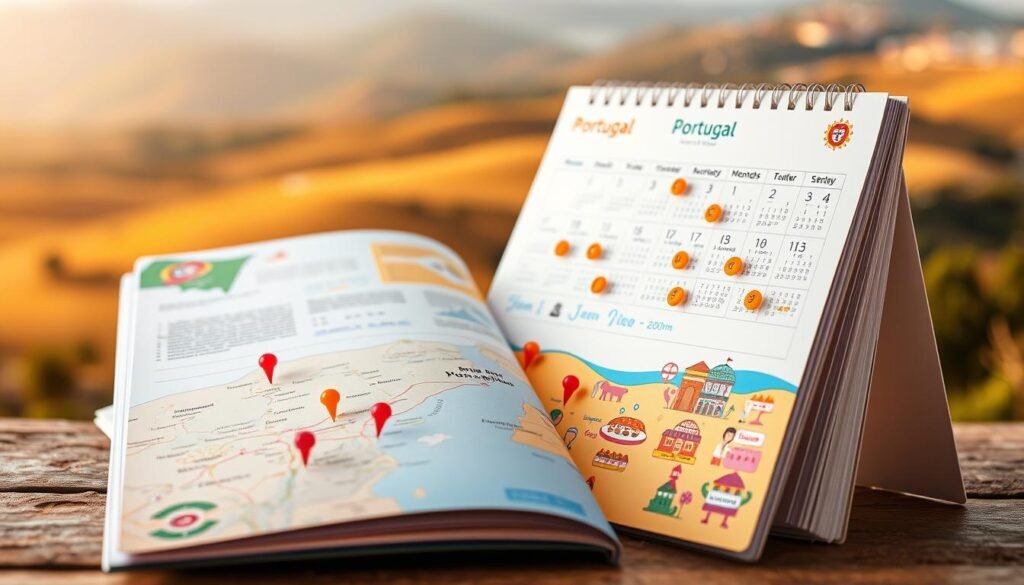
Planning by month helps me pick when I’ll chase festivals, calm beaches, or quiet museum days.
February–March
In these months I expect mild weather, thinner crowds, and better hotel deals. Carnival or Holy Week can change hotel availability, but March often delivers pleasant days before most tourists arrive.
April–June
Days grow longer and the festival calendar ramps up—Festas de Santo António and the Sintra Festival bring energy without the full summer crush. I use this window for city wandering and green countryside drives.
July–August
It gets very hot inland; the coast shines. I plan my busiest hours near water and save urban sightseeing for early morning or late day walks.
September–October
september october is my pick for warm seas and harvest activity. I mix beach days with vineyard visits and watch for occasional rain in the north.
November–January
I lean into off-season savings, holiday markets, and cozy fado nights in the cities. If rain shows up, I switch to museums and tastings so the day still feels rewarding.
“I keep flexible indoor options so a rainy spell never ruins the plan.”
Quick note: with a month-by-month plan I know where I’ll find the right balance of daylight, events, and availability. For a deeper calendar I consult a best time guide to fine-tune when I’ll travel.
How many days you’ll need and sample trip ideas
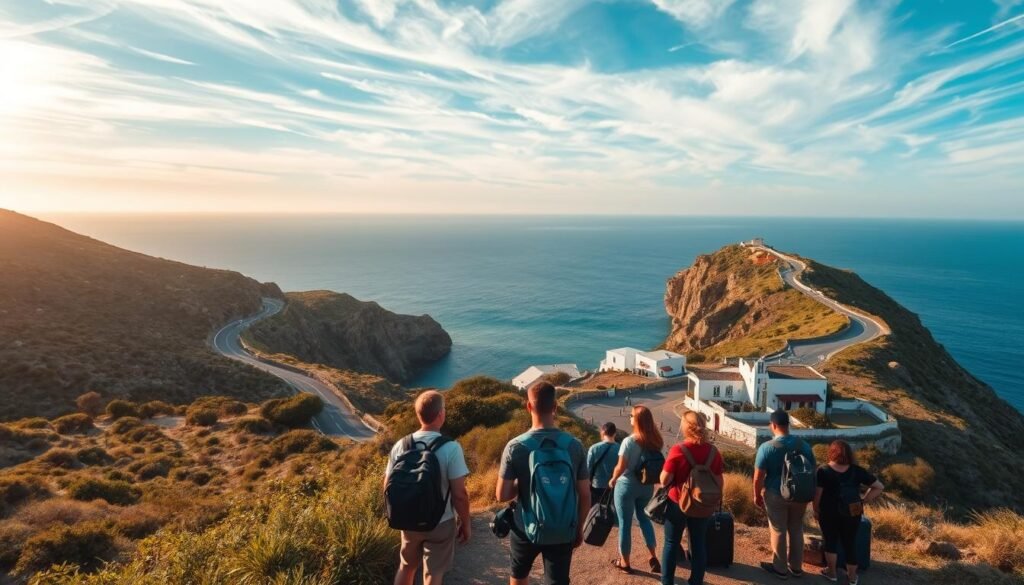
I set a simple rule: cover two major cities and one slower base for a well-rounded trip. For a first visit, that usually means about ten days split across urban and relaxed stays.
First-timer sweet spot
About 10 days gives me two to three nights in Lisbon, two to three in Porto, and three nights in the Douro Valley or the Algarve. I leave space for travel between bases and a free afternoon in each place.
Long weekend option
When I only have a long weekend, I focus on Lisbon with one easy day trip—Sintra, Cascais, or a nearby coast town. It keeps travel light and lets me savor neighborhoods without constant packing.
Booking tip for peak season
Reserve early for summer dates and harvest weekends. Top guides and hotels fill fast, and tourists can face limited options if they wait.
| Itinerary | Days | Why I pick it |
|---|---|---|
| Lisbon + Sintra (long weekend) | 3–4 | City sights + palace day trip |
| Lisbon, Porto, Douro | 9–11 | Cities + wine country pace |
| Lisbon, Algarve | 9–11 | City culture + beach rest |
Quick tip: For planning help on how many days, see my detailed guide on how many days to spend.
Conclusion
Choosing dates is really about trading warmth, crowds, and price in a way that fits my trip. I weigh summer sun against higher rates, shoulder months for balance, and winter for savings and quieter streets.
Practical moves I use: book popular stays early, plan site visits for the first part of the day, and sleep just outside busy hubs when I need space. That keeps daily logistics calm and flexible.
I give myself enough days between highlights so each region feels relaxed. Whatever month I pick, I’ll find friendly people, soulful food, and landscapes—from beaches to vineyards—that make the trip worth it.


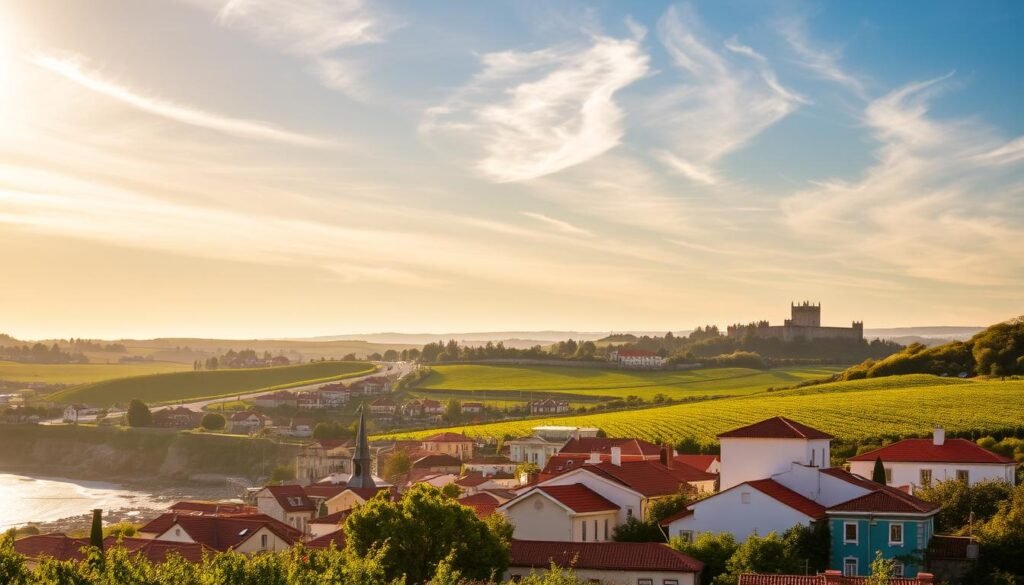



















One Response